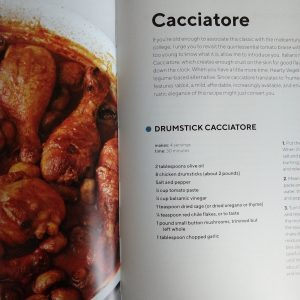Domingos Soares Franco, the tall, handsome, silver-haired winemaker of Jose Maria da Fonseca wines, came to Chicago recently to share three of his rich, elegant reds and two of his exquisitely multi-layered Moscatel aperitif/dessert wines with a beautifully paired selection of foods at avec, 615 W. Randolph. Attendees enjoyed a stellar experience of some of the many wonderful wines that Portugal has to offer.
On the eve of its 40th vintage in 2020, the seasoned winemaker shared some tidbits about his 200-years-in-the-business family’s processes and philosophies:
- Jose Maria da Fonseca makes one million cases each year – 60% reds, 25% whites, 5% Moscatel, and the rest roses. They make a blend every two years. They carefully follow the same formula each year in order to keep the style consistent. And then, as with fine Port wines, the winemaker must decide which blends will be declared vintages. Soares has been in charge of this critical part of the vineyard’s approach for several decades. And now he is encouraging the people with whom he works – some for 10, 30, even 50 years – to take this responsibility. He said they finally agreed to try – and he’s proud to say they made the last blend perfectly.
- In regard to climate change, he said it is inevitable – but that there is no guarantee whether in the end we will cool down and warm up. His advice to all winemakers is, if the climate heats up, don’t change the vines. Change the clones. He and his team, for example, use 12 clones of a single grape – and these clones give the best chance for the winemaker to control conditions.
Soares is not a fan of “blockbuster” type wines – the kind many Americans are trained to find most desirable. He said his team will make wines that cater to that market segment, but he prefers more subtlety, for example, by using less and less oak in his vinification. - Moscatel wines can remain in the bottle indefinitely because you can just put the cork back in after it’s opened. Because of the way it’s made, the wine cannot oxidate any further, and it cannot become vinegar because of the high alcohol content. Domingos said that though it’s legal to use caramel to adjust color and sweetness in Moscatel wines, some do so because some consumers tend to prefer a darker color. Your secret to knowing whether caramel has been used to enhance color is to hold your glass over a piece of white paper and look for a green rim on the wine. That is a sign of the genuine wine without color enhancement.
Alambre Moscatel de Setúbal 20-year-old. 100% Moscatel de Satubal grapes grown on the Setubal Peninsula. Silky mouthfeel, layered aromas of orange peel, citrus, apricots, nuts, dried figs, and almonds, leading to a whiff of cigar box. Complex and rich. Alc 18.4%. SRP ~$70.
Alambre Moscatel de Setubal 40-year-old. 100% Moscatel de Setubal grapes grown on the Setubal Peninsula. Like all fortified wines, brandy is added at precisely the right moment to halt fermentation at its ideal stage. Then this wine is aged in used oak. SRP ~$150.
Jose de Sousa 2017. Made with Grand Noir (98%), tinicaderia (22%, and Arogones (akin to Tempranillo) 20%. Soares ferments a small portion of this wine in clay amphora before resting it for 9 months in French and American oak casks. Akc 14.5%. SRP ~$20
Periquita Reserva 2017. Made from Castelo 56%, Touriga Nacional 22%, and – Soares’s favorite – Touriga Francesa 22%. Fermented 7 days with full skin contact, then aged 8 months in new and used French and American oak barrels. SRP ~$15.
Domini Plus 2015. Made from 96% Touriga Francesca and 4% Touriga Nacional. Fermented in the traditional manner with full skin contact, then rested for 10 months in new French oak casks. SRP ~$45.
Established in 1834, family-owned José Maria da Fonseca (J.M. da Fonseca) is one of Portugal’s best-known and most historic wine producers, with vineyard holdings in the country’s most important wine regions, including the Douro, Vinho Verde, Setúbal and Alentejo.J.M. da Fonseca has been owned and managed by the Soares Franco family for seven generations. Father and son team Antonio Soares Franco, Sr. and Antonio Maria S. Franco, Jr. stand at the helm, together with chief winemaker and vice president Domingos Soares Franco (brother and uncle, respectively, to Antonio Sr. and Antonio Jr.). Domingos holds the distinction of being the first Portuguese national to graduate in fermentation sciences from California’s U.C. Davis. He couples a modern perspective with a respect for Portuguese tradition in all his winemaking initiatives. Domingos will celebrate a personal milestone with the year 2020, which will mark his 40th harvest.
The J.M. da Fonseca winery, located in Azeitão on the Setúbal Peninsula just south of Lisbon, welcomes visitors year-round. Guests can tour the original 19th century estate and cellars, and enjoy a wine tasting and a stroll through the tranquil gardens which surround the estate. No visit is complete without a tour of the impressive Fernandes Soares Franco winery, established in 1999 and inaugurated in 2001 by the President of the Republic. Although this state-of-the-art winery is entirely computerized, it maintains time-honored methods of winemaking dating back to the early 1900s.
And, by the way, the food at avec was worthy of note for its creativity. Small plates came in a wide variety that featured vegetables in a big way. First, wood-oven roasted beets with spring peas, quinoa tabbouleh and berbere pecans. Next, charred carrots with black harissa, whipped feta and crisp wild rice dukkah. Then chicken liver crostini with rhubarb mostarda and mint.
Next courses included salty, warm, crispy focaccia with taleggio cheese, ricotta, truffle oil and fresh herbs – num! – along with a gorgeous dish of wood-fired chicken with hummus, zhoug, green garbanzo and seed cracker fattoush. And then came a small platter of delicious and unusual cow cheeses – St. Agur, Omorro, and Vento d’Estate. Desserts were 5-star for sure: vanilla bean cheese cake with candied pistachio and strawberry, plus a sweet mezze – “spread” – of caramel cashew squares, cinnamon sugar shortbread, and cacao nib biscotti, all delightful.
Executive Chef Paul Kahan’s team served up one delicious dish after another – all absolutely perfect accompaniments to the lovely wines. The quality of the food ingredients and the masterful presentation showed off the kitchen’s originality and its superior powers of execution as well as its ability to highlight the wines. Unquestionably a 5-star experience.




